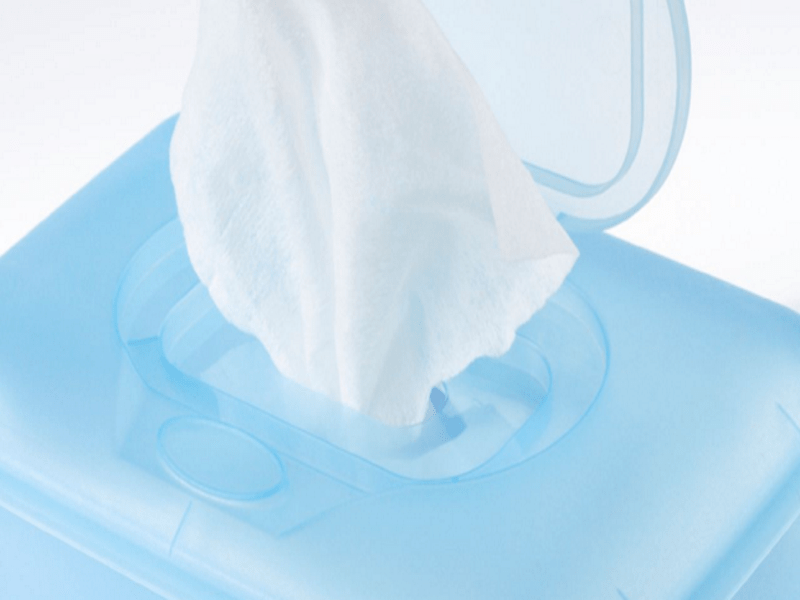Market Report
The Future of Sustainable Nonwovens to 2022

Across the nonwovens industry sustainability is an increasingly important concern, and disposable wipes have emerged as a key end-use segment, and it is poised to realise further gains across the next five years, via a new range of innovative greener materials.
This evolution is founded on a convergence of opinion on the importance of sustainability by all key players in the wipe buying chain. Consumers are eager, and increasingly willing to pay for more ethical products; manufacturers aspire to meet this and are also implementing their own tougher corporate citizenship goals.
The same corporate concerns are less evident in the buying attitudes of commercial clients for industrial wipes, and public sector organisations; but the whole drive is occurring under an umbrella of tighter environmental standards set by national and trade bloc regulators.
In its recent study The Future of Sustainable Nonwovens to 2022 Smithers tracks the evolution of this new class of base materials for wipes. Its analysis divides wipes into three core end-uses:
Combined these consume just over a quarter of all nonwoven demand, by tonnage in 2017; but command 40% of demand for sustainable nonwovens. Hygiene – menstruation products, diapers/nappies, and adult incontinence items – represents the largest end-use for both sustainable and traditional materials. It is the least developed of the major end-uses for sustainable solutions however, so proportionally its share of this material segment is significantly less.

Defining sustainability
While realising a fully sustainable product in any area is open to interpretation as it involves balancing several considerations, energy consumption; use of raw materials, natural or oil-based; water consumption; social impact; and biodegradability or disposability at end-of-life. Furthermore it is also necessary to factor in the environmental and other impacts of any product a wipe is being used instead of.
An array of nonwoven materials designed to address these consideration are available. Smithers’ analysis of the five major producers in this area – Berry, Freudenberg, Kimberley-Clark, Ahlstrom and DuPont – indicates that between 8.5% and 58% or their individual revenues now come from sustainable nonwovens.
This positive focus from manufacturers is reflected in the growing value of the sustainable segment of the wipes market. Worth $1.17 billion worldwide in 2012, it is now worth $1.91 billion having seen double digit growth across the last five years. While growth in sustainable nonwovens will slow across the five years to 2022, there is still room for expansion and these materials will continue to take relative market share from non-sustainable formats.
Personal care – baby wipes, toilet wipes, cosmetic/facial wipes, feminine hygiene wipes and bathing wipes – is the largest segment of wipes market, and by volume consumes the most sustainable nonwovens.
Sustainability is suited to personal care applications because these wipes are heavily based on spunlace (~50% cellulosic fibres), airlaid (~80% cellulosic fibres), and coform (~60% cellulosic fibres) nonwovens. Spunlace and airlaid processes are low-energy, low-waste and cellulosic fibres are among the most sustainable raw materials.
Across 2017-2022, further gains in sustainability for personal wipes will be gained via:
The drive to more sustainable wipes is also receiving support from major retailers – such as Walmart – as they increasingly stress sustainability as a core principle for brands sold on its shelves.
Home care is the smallest of the wipes segments. Historically it has utilised heavily synthetic, oil-based raw materials and harsh chemicals in the liquid load to carry out the cleaning and disinfecting function. Consumer and retail sentiment has begun to drive larger producers to offer more sustainable alternatives, for example employing spunbond/pulp/spunbond spunlace constructions. These substitute less sustainable spunbond polypropylene for the more sustainable carded rayon, lyocell or even polypropylene fibres.
Future growth in this application will involve other greener substitutes for spunbond polypropylene; including biopolymers such as polypropylene and polyethylene made from plant feedstocks, and new polymer types, such as polylactic acid (PLA).
A further trend will be to cooperate across the supply chain to develop and implement more plant-based cleaning chemicals on the wipes themselves.
These will help grow the home care wipe segment strongly across 2017-2022, albeit from a small base.
Sustainable nonwovens are already well represented in industrial wipes, though this is due partially to accident rather than deliberate choice. In this segment wipes based on airlaid pulp, spunlace polyester/rayon, and double recrepe (DRC)/wetlaid pulp are all well represented. This inherent material advantage is only partially compromised by difficulties with disposal as industrial wipes are more likely to become contaminated with hazardous materials.
The future outlook is again dependent to a large extent on material substitution.
Spunlace polypropylene fibres will be replaced with bioplastic alternatives, and virgin polyester fibre supply supplemented by a wider availability of recycled stocks. There are also environmental gains to be made from switching to a new generation of more sustainable bonding agents, and/or reducing the weight of these used in each wipes.
The Future of Sustainable Nonwovens to 2022 offers exclusive five-year market forecasts and expert analysis of the global regulatory climate and market trends driving future market expansion for these base materials. For more information and purchasing details, download the brochure.